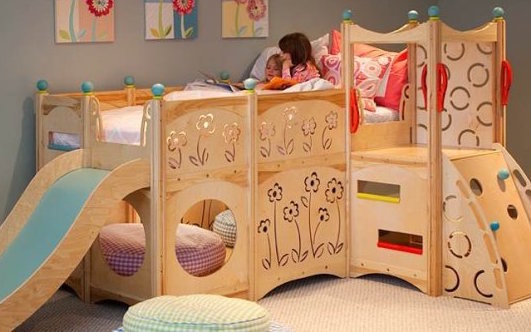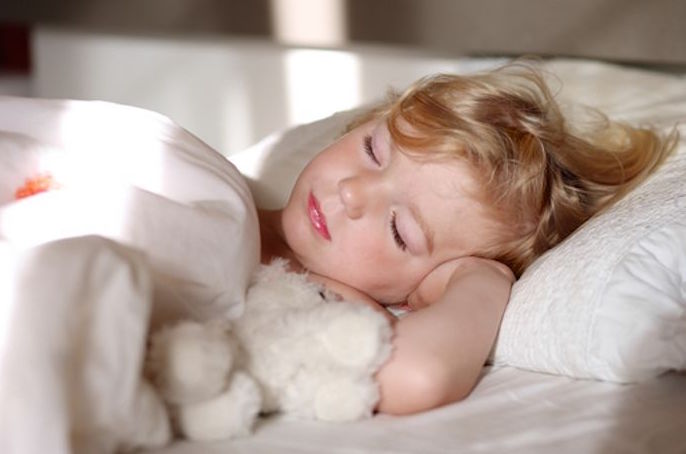As your child grows they will encounter several early milestones in their life and moving from their cot to a bed is one of them. It can often be a stressful time because a cot is all they’ve known, but there are several things that you can do to make this change simple that we’ll outline in this guide.
1. Routine
Moving from a cot to a bed can be a lot to deal with for a baby, so it’s essential that you keep the rest of the nighttime routine the same, so they remain comfortable. This means everything that you do to get your child ready to bed including their bath, story and sleeping time.
Having a routine will limit any negative reactions to sleeping in a different bed and will make the transition even more comfortable. If you don’t have a set routine that you already follow, then it’s advised that you put one in place before you move them to a bed.
2. Safety
No matter the size of the new bed, making the jump can still be a big deal for your child, so you need to ensure that it’s safe for them. This can mean that you invest in side rails to ensure that they don’t roll off the bed onto the floor. The rails will also be familiar to a child who is used to sleeping in a cot, making the transition easier.
You can also have one side of the bed up against the wall. Additionally, you should aim to choose a bed that is lower to the ground. It means that it’s not only easier for your child to get in and out of bed, but if they do fall then, it will limit the amount of damage caused.
You can also place the mattress from their cot on the floor next to the bed, so if they do roll out, then this will cushion their fall.
3. Let Them Help With Bedding Selection
If your child can’t help to decide on the bed that you buy, for instance, if it’s a second-hand bed, then allow them to choose the type of sheets. This makes them feel like they have ownership of the process and will build their confidence about sleeping in their new bed.
Ideally, you should buy two sets of bedding just in case of midnight accidents, or if one set is being cleaned then you have a clean set to put on.

If your child isn’t around to help you choose the bedding, then stick to similar patterns and shades as their original cot as this will provide a consistent environment that they’re already used to which will help them feel more comfortable, so they fall to sleep quicker.
4. Placement
It’s essential to maintain consistency when making the switch to a bed so you should place the new bed as close to the same position as where the old cot used to sit. Additionally, you should try to keep the room layout the same as it previously was.
Too much change in the room will make your child feel like they’re moving into an entirely new room which can make them find it difficult to fall asleep.
5. Let a Sibling Help
If your child has an older sibling, then you can also use them to help. This is even more applicable if they share the same bedroom as the older sibling can set an excellent example by sleeping in a big bed.
Once your younger child sees their sibling doing it, it will give them the confidence to do the same. It also gives them security through the night. You need to be cautious of doing this if the older sibling has trouble sleeping in a big bed as this will set the wrong example making the overall situation worse.
6. Ease into it
Ideally, you should ease your child into the idea of sleeping in a bed because it will be a significant change for them. You can ease them in by allowing them to nap in it for a few hours during the day before sleeping in it for a full night. This will get them used to the feel of the larger sized bed and allow them to settle quickly when they make the permanent move.
It’s common for children to wake up in the middle of the night, so the new surroundings may leave them feeling disorientated. But if they’ve spent time in the bed taking naps, then this is less likely to happen.
7. Shop Together
You can build excitement with your child by helping them choose the bed. This could mean that you bring them with you when you go to the bed shop allowing them to lie on a range of beds. The more you involve them in the process, the more comfortable they’ll feel when it comes to sleep.
It’s easy for your child to be overwhelmed by the amount of choice in a bed shop so you should create a shortlist of two or three beds so they can make a better and quicker decision.
If they choose something that they want to sleep in, they’ll end up looking forward to sleeping during the transition.
8. It May Not Be Straight Forward
During the transition period, you need to be patient as it may not be plain sailing the whole way, because it may take time for your child to fully adjust as it can be a significant change for some.
It varies from child to child, for some, it can be a time of excitement whereas for others it can be worrying. Small things like rewarding them for the first few nights can go along way to helping them to settle and remain comfortable.
9. Timing
Making a smooth transition will often come down to choosing the right time. If your child is already undergoing a transition such as potty training, then this can make this a more stressful time. It’s recommended to move this to a different time when it’s calmed down a little.
As a parent, you shouldn’t feel pressured to move them because they have plenty of time. It’s common to feel the pressure especially if you have children of family and friends that have already made a move.
If you’re expecting another baby, then you should aim to make a move before the new baby has arrived.
10. Size
The more familiar the new environment is to their current environment, the easier the transition will be. The new bed will be larger than their current cot but avoid getting a new bed that is significantly larger because this will make it more unfamiliar to your child.
It can be tempting to get a larger bed so they can grow into it, but this can make it harder for them to get used to it. If they quickly outgrow the new bed you can always sell the bed to recoup some of your money to go towards a new bigger bed.
Signs That Your Child Is Ready To Move Into a Bed
There’s no one size fits all age that's best for every child to move from a cot to a bed, but the average child moves between the age of two and three years old.
They’re Climbing Out of Their Cot
There will be a point in your young child's life when they’re able to climb out of the crib itself. This then escalates to a safety issue because this can cause an injury especially if they do it through the night as you may not hear it.
It's a key sign that they have begun to outgrow their cot and it may be ready to transition to a bed.
If your child finds it easy to climb out of the cot, but you’re not ready to move them into a bed, then you can lower the mattress as low as possible which will make it harder to climb out to also buy you a bit more time.
They Can Make it Through the Night Without Supervision
If your child is in a position where they can sleep through the full night without disturbing you, then it may be time to think about moving to a bed.
Another simple question to ask yourself is if you’d be comfortable with your child waking up before you and getting out of bed? If the answer is no then maybe they need to stay sleeping in a crib for a little longer.
Your Child is Keen to Move
If your child has shown a keenness to moving into a big bed, then this is an indicator that they’re ready. However, if they have an older sibling that's in a bed, then this may mean that they feel left out.
You need to ensure that you move them when they’re ready and not because you want to speed up the process, which often happens when a household is expecting a new baby.

